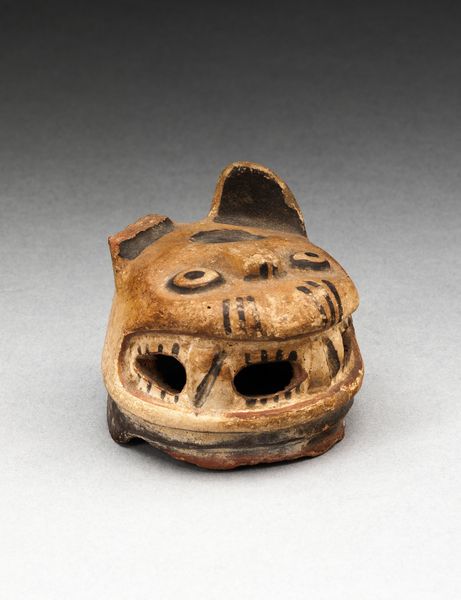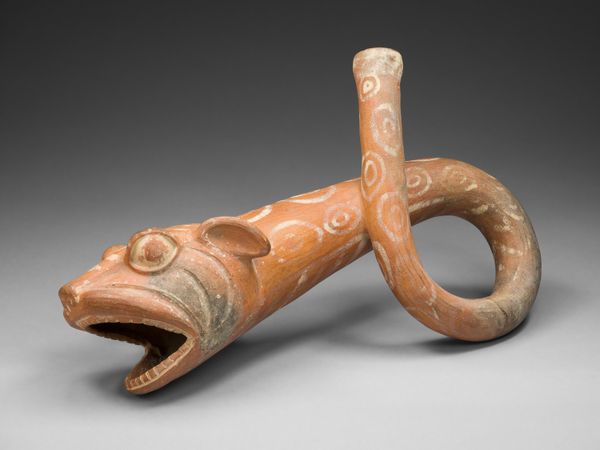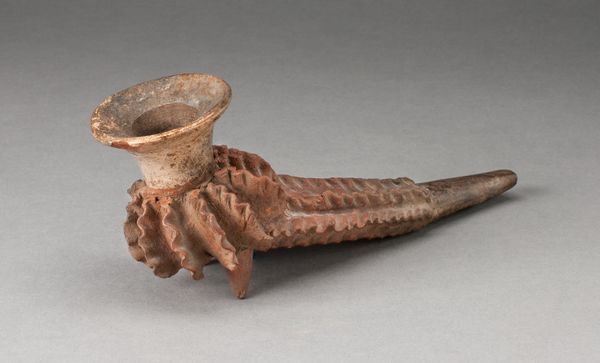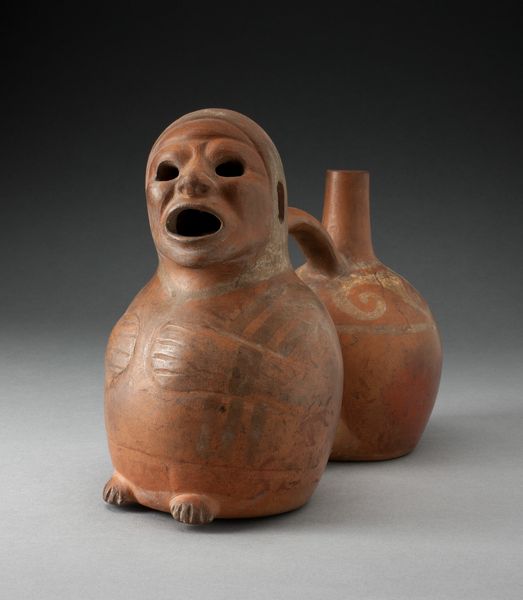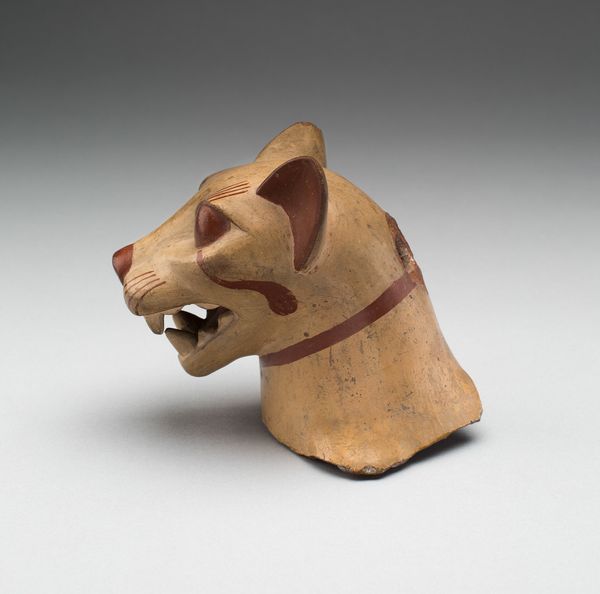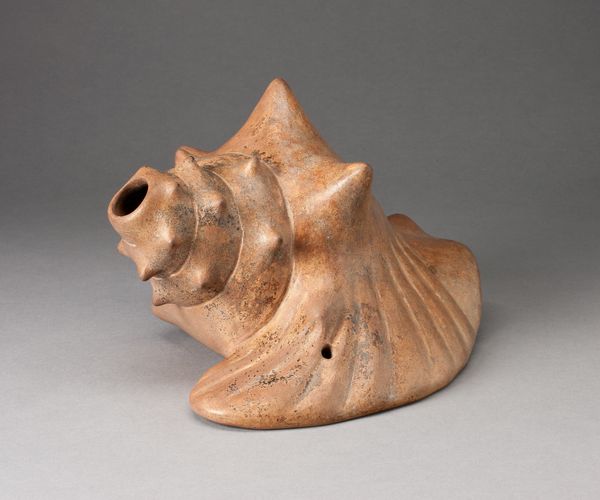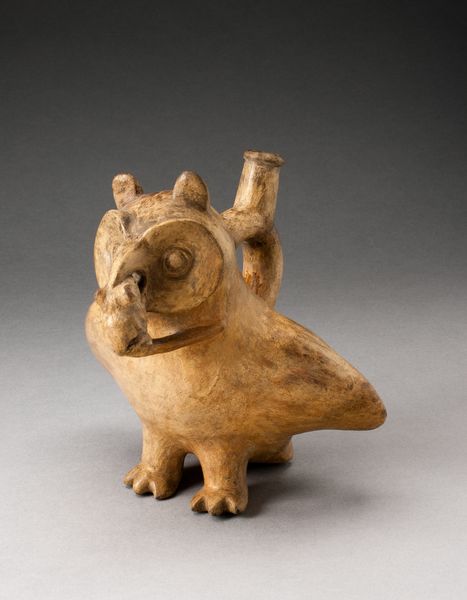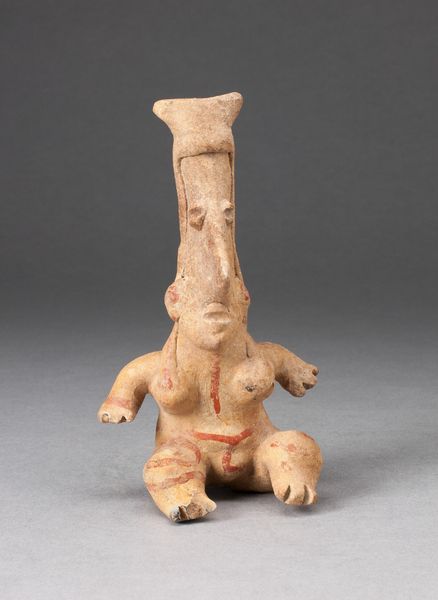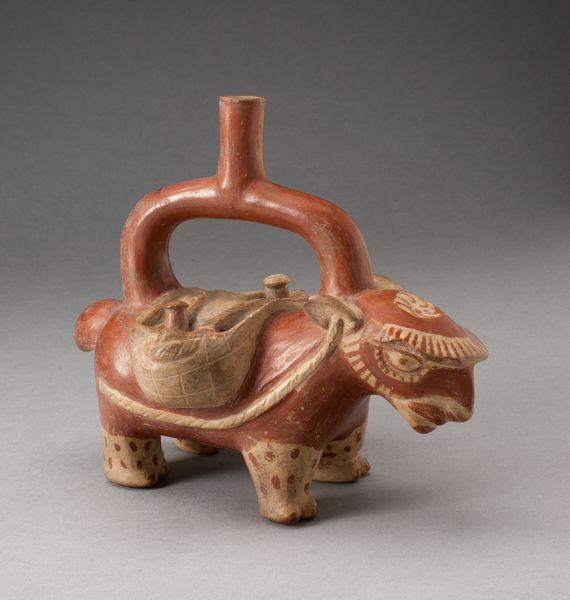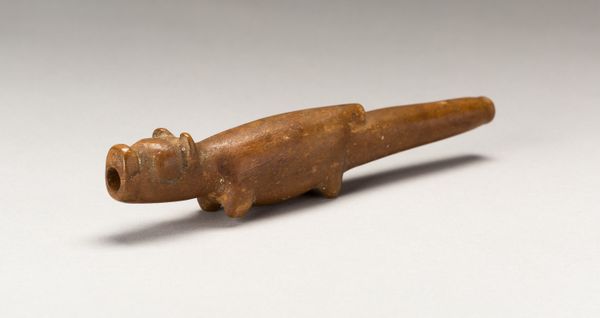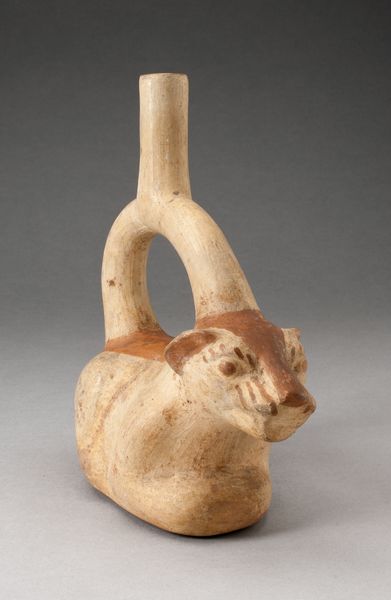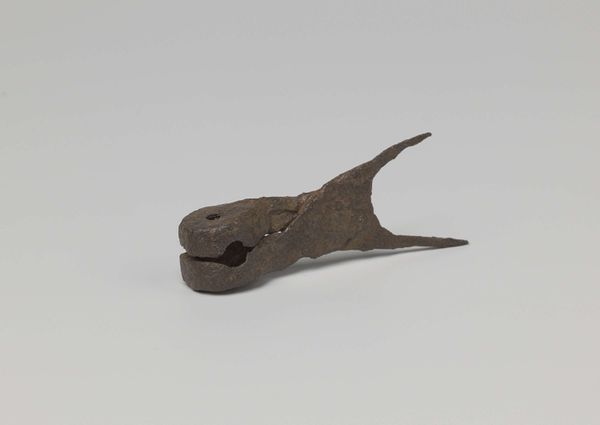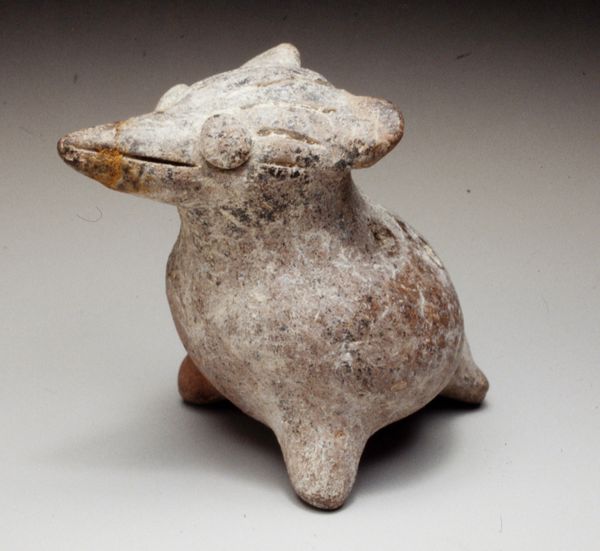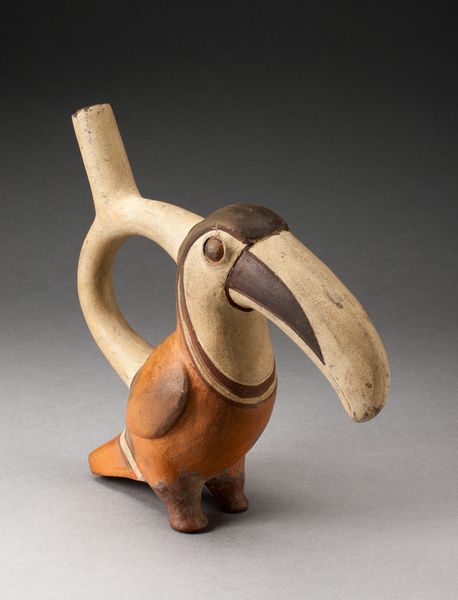
Coiled Trumpet in the Form of a Wrinkled Animal Face c. 100 - 500
0:00
0:00
ceramic, sculpture, terracotta
#
ceramic
#
figuration
#
sculpture
#
terracotta
#
indigenous-americas
Dimensions: 10.6 × 31.8 cm (4 3/16 × 12 1/2 in.)
Copyright: Public Domain
Curator: Here we have a striking piece, a "Coiled Trumpet in the Form of a Wrinkled Animal Face." Created by the Moche culture sometime between 100 and 500 AD, this ceramic sculpture now resides here at the Art Institute of Chicago. Editor: Wow. Immediately, it feels primal. Almost unsettling, yet beautifully crafted. The way those wrinkles are rendered – it looks more like an ancient gargoyle than just an animal. Curator: It is indeed powerful. When considering the context, it's crucial to examine the Moche's sophisticated understanding of ceramics production and the likely role such an instrument would play in ritual life. The choice of ceramic, readily available, underscores a democratization of artistic expression, embedding it within the everyday material world. Editor: I can almost hear it echoing through a temple courtyard. Imagine the sounds, resonating from that open mouth with its row of stylized teeth! And the looped handle...It practically begs to be held, to become an extension of the body making sound. Was this sound meant to intimidate or communicate with higher powers? Curator: Scholarship suggests both, in varying contexts. The trumpet's physical presence indicates complex hierarchical systems—both access to raw materials like clay and the specialized labor required to produce the ceramic object. The “wrinkled animal face” suggests zoomorphic representation possibly linked to Moche cosmology or deities, hinting at the instrument’s use within state-sanctioned ceremonies, for instance. Editor: Yes, it all feels so deliberate, even down to the coloration... almost earthen in its presentation. I imagine it must have been such a potent symbol, both as object and instrument. A sort of tangible bridge between our world and whatever spiritual plane the Moche believed in. Curator: Absolutely. The production of objects like this provided resources, created opportunities for specialization, and affirmed religious ideology, reinforcing established power structures through art production. It offers a glimpse into the very foundations of their social and political framework. Editor: Standing here, you almost feel you've travelled through time and are glimpsing another world—one deeply attuned to nature, symbolism, and the visceral power of art. Curator: Precisely. A single artwork is all it takes to truly understand another civilization.
Comments
No comments
Be the first to comment and join the conversation on the ultimate creative platform.
